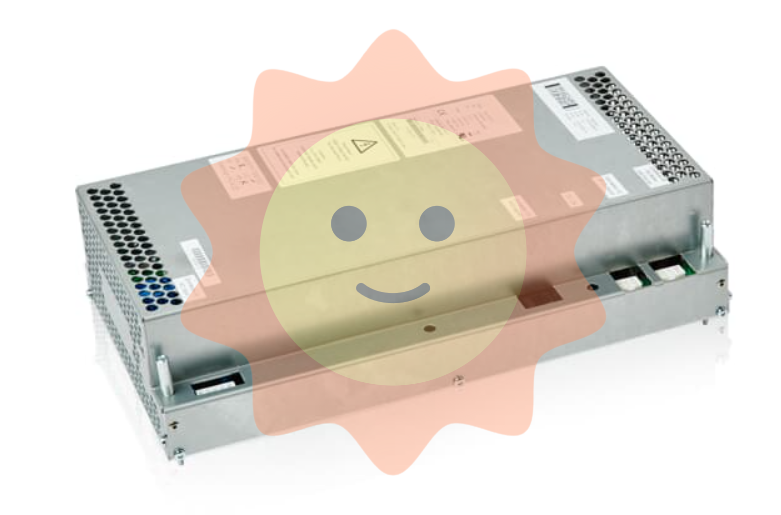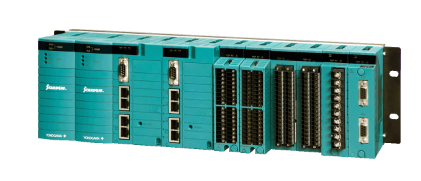ABB DSQC354 is a universal input/output (I/O) module for industrial automation scenarios, belonging to the core components of ABB's robot and process control compatibility series. It focuses on signal interaction and centralized control for multi device collaboration. It adopts standardized modular design and can be seamlessly integrated into ABB IRC5 robot controller and AC800M process control system, compatible with robot body, sensors, actuators and third-party automation equipment. With flexible signal adaptation capability and stable operation performance, it has become a key signal hub for multi industry automation systems such as mechanical manufacturing, logistics and warehousing.
ABB DSQC354 Industrial I/O Module
Product Overview
ABB DSQC354 is a universal input/output (I/O) module for industrial automation scenarios, belonging to the core components of ABB's robot and process control compatibility series. It focuses on signal interaction and centralized control for multi device collaboration. It adopts standardized modular design and can be seamlessly integrated into ABB IRC5 robot controller and AC800M process control system, compatible with robot body, sensors, actuators and third-party automation equipment. With flexible signal adaptation capability and stable operation performance, it has become a key signal hub for multi industry automation systems such as mechanical manufacturing, logistics and warehousing.
Specification parameters
1. Core performance parameters
Signal processing capability
Supports 32 digital inputs and 32 digital outputs, with standard 8 analog inputs (4-20mA/0-10V)
Response speed
Digital signal processing delay ≤ 20 μ s, analog sampling frequency up to 200Hz
Control accuracy
Analog input error ≤ ± 0.3% FS, output signal resolution of 12 bits
Power consumption
Rated power consumption of 8W, maximum power consumption of 12W (including external equipment power supply)
2. Hardware and environmental parameters
Communication interface
1 x DeviceNet interface, 1 x EtherNet/IP interface, compatible with ABB RobotWare and Control Builder M protocols
Power supply specifications
24V DC wide input (18-32V DC), with overvoltage, overcurrent, reverse connection and short circuit protection
Environmental tolerance
Working temperature -10 ° C to 65 ° C, storage temperature -40 ° C to 85 ° C, protection level IP20
Physical specifications
Size 150 × 100 × 45mm, weight 0.4kg, supports DIN rail and panel installation
3. Certification and compatibility
Certification: CE (EN 61131-2), UL 508 industrial safety certification, compliant with IEC 61010-1 and IEC 61800-3 standards
Software compatibility: compatible with ABB RobotWare 6.0 and above versions Control Builder M V5.0+, Support RAPID and Structured Text (ST) programming
Performance characteristics
High density signal control: adopting an integrated design of 32 in and 32 out digital channels and 8 analog channels, a single module can cover the full signal requirements of small and medium-sized automation systems, increasing signal capacity by more than 50% compared to modules of the same volume, reducing the number of modules used and wiring costs.
Cross system compatibility capability: Simultaneously supporting the integration of robot control systems and process control systems, through DeviceNet and EtherNet/IP dual protocol interfaces, to achieve robot PLC、 The three-way data exchange of sensors does not require additional protocol converters and is suitable for mixed control scenarios.
Adaptability to harsh environments: Using wide temperature industrial grade components and reinforced heat dissipation structures, it can operate stably in environments ranging from -10 ° C to 65 ° C. Coupled with anti electromagnetic interference (EMC) design, it can resist strong interference sources such as motors and frequency converters in industrial sites.
Intelligent diagnosis and maintenance: Built in channel level self-test circuit and fault memory function, can monitor abnormal states such as open circuit, short circuit, overcurrent in real time, and provide dual prompts through module indicator lights and upper computer alarms. The fault location accuracy reaches a single channel, and the average repair time (MTTR) is less than 5 minutes.
Flexible expansion and configuration: 16 similar modules can be cascaded through the DeviceNet interface to achieve centralized control of 512 digital and 128 analog signals; The analog channel supports software switching of voltage/current modes, adapting to different types of sensor access requirements.
Working principle
This module operates based on the general control logic of "multi-source collection protocol conversion centralized processing distributed output", with the core process as follows:
Multi source signal acquisition: The status signals of limit switches and photoelectric sensors (such as workpiece in place and equipment start stop) are received through digital input ports, and continuous parameters such as pressure, temperature, and flow are collected through analog ports. After filtering interference through photoelectric isolation circuits, they are transmitted to the core processing unit.
Protocol conversion and synchronization: The embedded processor interacts with the robot controller and PLC through dual communication interfaces to automatically complete the conversion between RobotWare and DCS protocols. It prioritizes and synchronizes multi-source signals to a unified control timing sequence.
Centralized operation and instruction generation: Combining preset control logic with upper computer instructions, perform logical operations and data processing on collected signals to generate digital control instructions (such as driving actuator actions) and analog adjustment signals (such as controlling valve opening).
Output and feedback closed-loop: Instructions are transmitted to the actuator through the output channel, while receiving feedback signals from the actuator. After verification, they are uploaded to the upper computer, forming a full chain closed-loop control of "sensor module controller actuator" to ensure control accuracy and system stability.
5、 Precautions
1. Installation specifications
Adopting DIN rail vertical installation, at least 30mm of heat dissipation space is reserved above and below the module. The control cabinet needs to ensure good ventilation, stay away from high-power motors, transformers and other heat sources and interference sources, and maintain a distance of ≥ 50cm from strong electrical equipment
When wiring, strong and weak electrical cables need to be wired separately. Analog cables use double shielded twisted pair cables, with the shielding layer grounded at one end; A 120 Ω terminal resistor should be installed at the end of the DeviceNet bus, and the cable length should not exceed 500m to avoid signal attenuation.
2. Operation and maintenance
Before the first startup, the module configuration needs to be completed through the upper computer software, including channel properties, communication addresses, and baud rates, to ensure that they match the controller parameters; Suggest enabling module self-test function and regularly calibrating analog channels (once every quarter).
Check the tightness of the wiring terminals and the operating temperature of the module every month (normal ≤ 60 ° C), read the fault log through the upper computer every six months, replace the wiring terminals of aging or faulty channels, and clean the surface dust of the module to ensure heat dissipation efficiency.
3. Safety protection
Before installation and maintenance, the module power supply and associated equipment power supply must be cut off, and the capacitor must be completely discharged (at least 5 minutes) before operation; The power circuit needs to be equipped with 3A fast fuses and surge protectors (SPDs), with a grounding resistance of ≤ 4 Ω.
When used in explosion-proof areas, it is necessary to cooperate with explosion-proof junction boxes and sealed joints to ensure that the module installation complies with the IEC 60079 explosion-proof standard; To avoid long-term overload operation of the module, the load current of each digital output channel should not exceed 2A.

- User name Member Level Quantity Specification Purchase Date
- Satisfaction :
-









Email:wang@kongjiangauto.com




































































































































